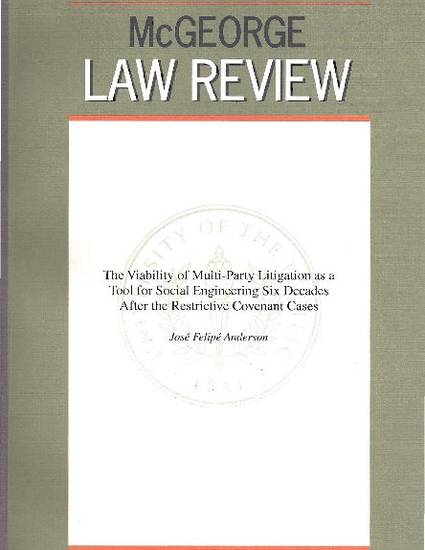
Six decades ago, a group of lawyers sought ways to overturn the racially restrictive covenants that were common across the United States. These restrictions on integrated neighborhoods were the first legal battleground of the civil rights movement using the courts of civil justice to remove what many thought were immoral restrictions on the rights of free people. The most famous of those cases was Shelley v. Kraemer, but the doctrine that emerged from that particular case was actually a series of separate, multi-party lawsuits in various locations, using teams of lawyers acting in concert with each other to achieve justice. It was at Howard University that its former Dean, Charles Hamilton Houston, perfected the academic laboratory for litigating multi-party civil rights, which both developed and trained civil rights lawyers.
This Article attempts to explain some of the housing discrimination litigation and place it in its proper historical context. It will discuss the important role of a few lesser-known cases leading up to the more famous Supreme Court litigation in Shelley v. Kraemer. Among the goals of this Article is to encourage the courts to become active participants in resolving major social issues that affect large groups of similarly situated litigants. This Article will offer perspective on how the lessons taught by those cases will serve us today, even as access to courts of civil justice has been under attack in the Legislature and by government executives who might like to limit access to the courts for groups seeking to collectively obtain relief through the use of a variety of lawsuits in the nation's courts.
The Supreme Court's recent reluctance to expand the role of class action in reform litigation as demonstrated in its opinion in AT&T Mobility v. Concepcion, suggests a disturbing trend to limit the power of the class action tool. Such a short-sighted approach is likely to limit legitimate group claims that seek redress in the courts without the ability to consolidate their cases with other aggrieved parties. The restrictive covenant cases should have taught us that claims that are not popular, but may be meritorious often require group litigation to obtain justice.
